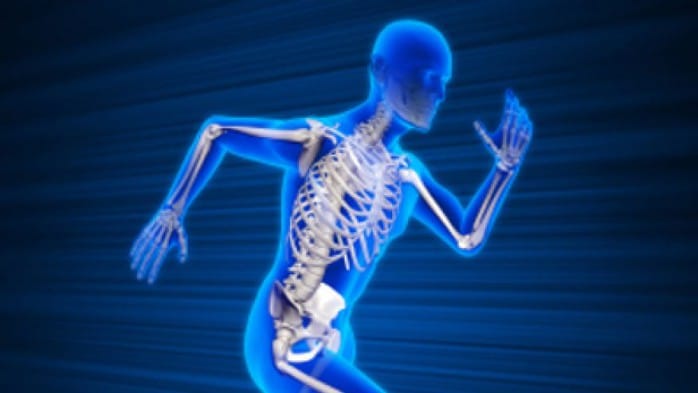With 20 October being celebrated as World Osteoporosis Day, this month we get down to the bare bones of the disease, and how running can be a key factor in preventing it. – BY SEAN FALCONER
The bones of the human body are made of living tissue that is constantly being broken down and replaced, but when a person suffers from osteoporosis, the creation of new bone cannot keep up with the removal of old bone. This causes bones to become weak and brittle, often leading to fractures, and in severe cases, even bending over or coughing can cause a fracture! The disease affects men and women of all ages and races, but post-menopausal older women are the highest risk group.
Running Rules
While you can use medication and supplements to combat osteoporosis and build stronger bones, simply following a healthy diet and getting regular weight-bearing exercise can go a long way to help prevent bone-loss, or strengthen already weak bones. The doctors recommend at least 30 minutes of high-intensity exercise three to five times a week, targeting the major muscles around the hips and spine, so regular runners are already getting more than enough exercise to hopefully ward off osteoporosis.
Running also helps you to maintain a healthy weight, which is another contributing factor to keeping osteoporosis at bay, given that obese adults have a four to five times higher risk of developing osteoporosis than those with a healthy weight. Adding strength work in the gym also helps, as it strengthens the bones in the upper body, and yoga or Pilates not only help in strengthening the whole body, but also in improving your balance and lowering your risk of falling.
Bone-healthy Nutrients
Getting sufficient calcium, vitamin D and protein are essential for your bone (and muscle) health, so dairy foods are highly recommended, as they provide the highest amounts of calcium and also contain protein and other essential minerals. Calcium is also contained in certain fruits and green vegetables, and in canned fish with bones. Most of the vitamin D in the body is produced from exposure of the skin to sunlight, but small amounts are also found in foods such as egg yolk, salmon and tuna, or foods fortified with vitamin D. Another essential is to avoid negative lifestyle habits, such as smoking and consuming high levels of alcohol, but the bottom line remains that a daily run now will do more to help you avoid brittle bones later in life.


